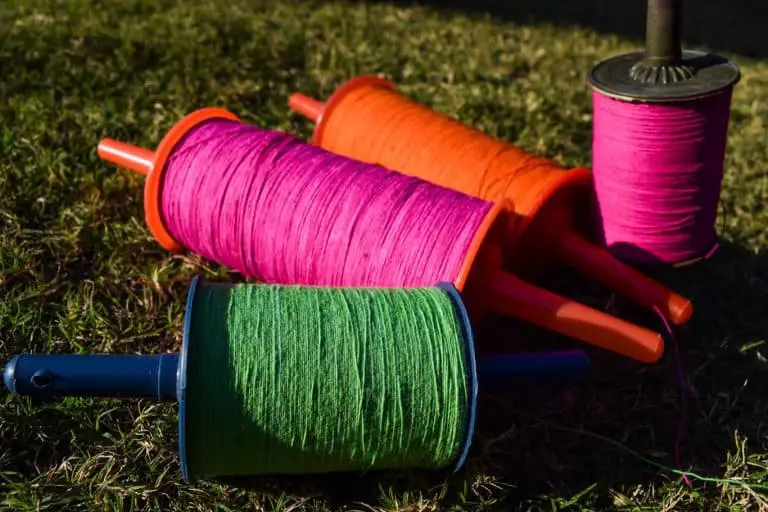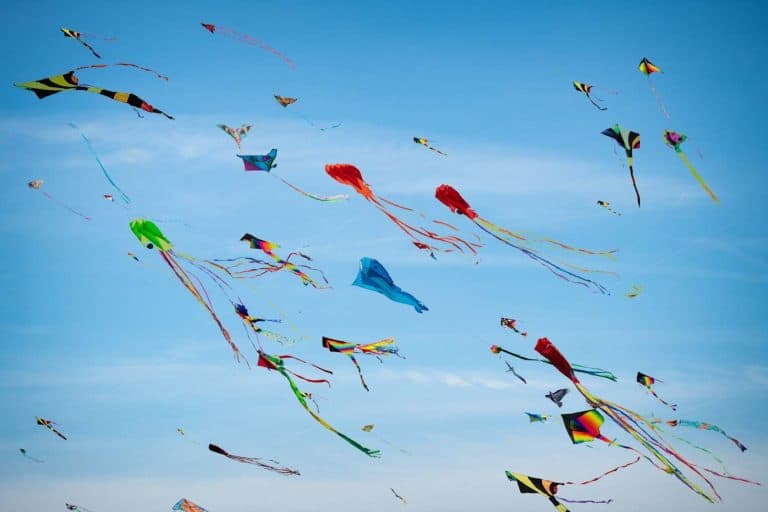3 Tips On Choosing A Kite Size Best For You
An essential factor to be considered before kiting is the size of the kite to use. In kite flying, a size fit all approach does not apply. Therefore, before picking a kite size, there are necessary factors that need consideration, so we will be giving you tips on choosing a kite size best for you.
Wind speed and the number of lines on a kite directly impact how large or small a kite will be. Novice and expert kite flyers will have varying kite size preferences because of how often they have indulged in the sport and their different techniques.
1. Wind Speed
Kites come in various sizes, both large and small. The diamond-shaped shape often comes to mind when people think about kites. These kites are small and can quickly be flown in winds ranging from 5-15mph. They are normally accompanied by a tail (Source).
Beginners are advised to take on delta kites. They have a triangular shape and are easy and stable to fly. On the other hand, Parafoil kites are available in various sizes and fly in winds of 6-20mph. Eye-catching kites such as cellular and box kites fly well in 8-20mph winds.
2. Kite Flyer
Young kids should opt for diamond kites. They are small in size, but they can also be assembled with ease.
Beginners are commonly steered towards the delta kite, which is considered the best for them.
Regular and small-sized kites, in particular, are considered ideal.
3. Number Of Lines
The number of lines one hopes for on a kite will directly impact the size of the kite. For example, the 4-line kites are considered the largest in indoor kite flying. While they are challenging to fly compared to other indoor kites. They perform stunts and tricks thanks to their agility and maneuverability (Source).
Some kite fighting kites require single lines. These kites are small and need stability, with tension in the line being an essential factor. Cultural fighter kites utilized wood and paper, while modern ones use carbon fiber and orcon as their materials.

What Is The Best Size Kite For Beginners?
When buying their first kites, beginners should focus on getting kites that are fast to learn and have good stability. Keeping this in mind, high-performance kites should be avoided. They require highly skilled flyers, but they can also be costly.
Most professionals advise kiting beginners to start their journey with a delta kite. Delta kites get their name from their triangular shape. Small kites, in particular, are encouraged.
Delta kites can be flown with ease and make great first-time kites. Instead of flying against the wind, they flow with it. It allows them to fly in winds that could be considered too light for other kites. Also, their construction is semi-flexible, which permits them to fly in various winds (Source).
The addition of tails to kites ensures stability while in the air. When flying in gusty winds, adding tails to delta kites will assist with launching and stability.
Are Bigger Kites Better?
Small-sized kites such as the diamond and delta kites are easier to piece together when it comes to assembly. It makes them favorable for children. These kites are also light making them easy to carry around (Source).
When considering responsiveness, smaller kites turn quicker and more responsive than bigger kites. Novice flyers should opt for these kites to avoid difficulty when flying. A complex kite flying experience takes the fun out of the sport.
The wind is essential when choosing between a small or large kite. For sport kiting, kites that are smaller in size are preferable in high wind areas.
Larger kites also have vented versions that can be appropriate for this type of wind. Larger-sized kites should then be utilized in low winds.
What Is The Normal Size Of A Kite?
As mentioned earlier, kite sizes range from 5-to 17 meters. Finding kites larger than this is possible. The universal kite size, however, is 12m². With this kite size, operators can easily handle medium wind speeds (Source).
Other publications suggest that average adults should opt for kites in 10-13m. Again, the initial factors to consider would be wind speeds, flight area, and a person’s weight (Source).
There are a variety of kite designs to choose from, ranging from flying insects and mythical beasts to birds.
Chinese kites are prepared using split bamboo covered in silk and hand-painted. Larger kites have latches and clever hinges for easy disassembly (Source).
There are single-line kites with tails attached to them. The tails ensure the kite’s nose is pointing towards the wind. On the other hand, the two lines or more on aerobic kites allow them to stay angled towards the wind.
For an appealing appearance while in the sky, spin socks and spinners are at times attached to the flying lines. These kites have extra de-power lines and mechanisms for quick release to ensure a quick response when traction kite emergencies occur.
There are extremely large kites in existence. The record holder for the largest kite flown is The Flag of Kuwait. This kite was flown for about 20 minutes (Source).
How Many Kites Do I Need?
Kite flying is a great and fun sport. The first step one takes is choosing a kite. There are different kites available. To fly in various winds, one would have to pick other kites. Proper assembly of the kite will determine whether it will fly or not (Source).
Kites best for light to medium winds include Dragon, Diamond, and Delta kites (6-15mph). Kites that are fitting for stronger winds include stickless Parafoil kites and Box kites (8-25mph).
Besides checking on phones for the forecast, kite flyers can learn how to read the wind conditions through observation. Windsock and flags come in handy when determining the amount of wind.
Flying should be done in an open area to avoid the turbulence caused by hills, trees, and buildings. An open area will also allow letting out more lines. Flying near power lines and when it’s raining should also be avoided.
Summary
When determining the kite size that best suits an individual, skill, wind speed, and the number of lines they would like to use are all factors to be considered. Kites range from small to extremely large sizes, and all their characteristics differ. Therefore, the kite size is essentially up to you.
Sources
- Kitty Hawk Kites, https://blog.kittyhawk.com/adventure/kite-flying/beginners-guide-to-kites/, Accessed March 30, 2022
- Kiting Planet, https://kitingplanet.com/can-you-fly-a-kite-indoors-how-does-it-work/, Accessed March 30, 2022
- Into The Wind, https://intothewind.com/kites/delta-kites.html, Accessed 30th 2022
- Kitty Hawk Kites, https://blog.kittyhawk.com/adventure/kite-flying/beginners-guide-to-kites/, Accessed March 30, 2022
- Kitty Hawk Kiteboarding, https://khkkiteboarding.com/pages/how-to-select-the-right-kite-size, Accessed March 30, 2022
- MACkite, https://www.mackiteboarding.com/news/how-to-choose-your-first-kiteboarding-kite-size-kiteboarding-size-chart-included-/, Accessed March 30, 2022
- Air Padre Kiteboarding, https://www.airpadrekiteboarding.com/news/how-to-choose-the-proper-size-kitesurfing-kite.html#:~:text=Kites%20range%20in%20size%20from,in%20the%20double%20digit%20range., Accessed March 30, 2022
- Kite Mare, https://www.kitemare.com/news /buying-your-first-full-size-kite/, Accessed March 31, 2022
- Wikipedia, https://en.wikipedia.org/wiki/Kite#Materials, Accessed March 31, 2022
- Wikipedia, https://en.wikipedia.org/wiki/Kite#World_records, Accessed March 31, 2022
- Edu, https://mypages.iit.edu/~smart/scavjoh1/lesson7.htm, Accessed March 31, 2022







